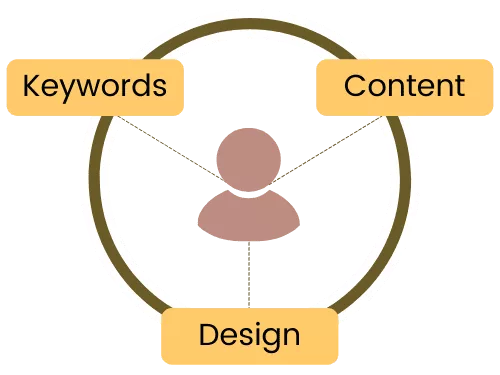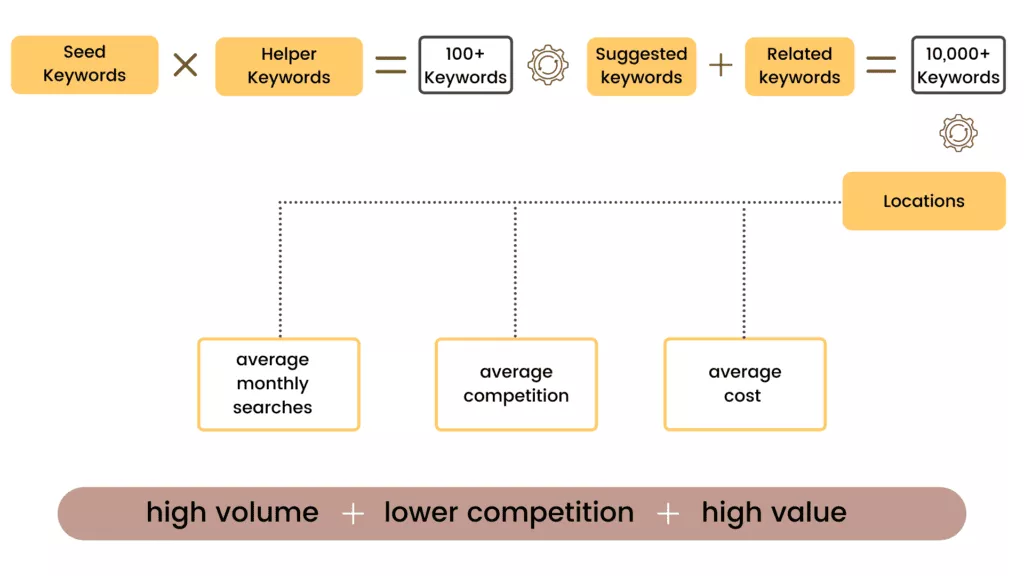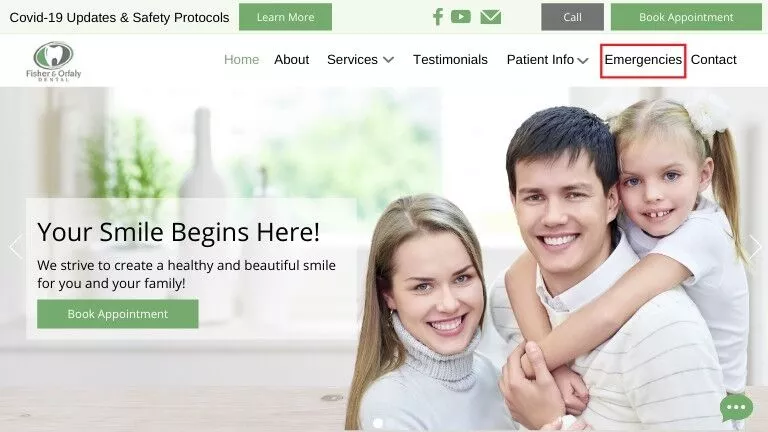Resources / How we ranked a dentist on Google (in just 3 months)
Read about the Proven System of digital marketing to turn around your medical practice and rank on Google’s first page.

Harshal Limaye
Published On: July 14, 2021
How we ranked a dentist on Google
This is what I hear from dental practices all the time when I first talk to them. If your story is similar, this video is for you.
Hi, I am Harshal Limaye, Founder and CEO at Mktg.Doctor, a no-code marketing platform for doctors. I’ll reveal our proven system to turn around your dental practice and rank you on Google’s first page in this post.
Fisher & Orfaly Dental is a family dental practice located in downtown Salem, a beautiful historic coastal city in the State of Massachusetts. It’s been a thriving practice for over 45 years where multiple generations of families have trusted them for dental care.
Dr. George Orfaly who has been with this practice for more than 15 years, always knew in his heart that they had to change with the changing times. So, Dr. Orfaly hired and changed many SEO and marketing companies to help with building the website and creating an online presence for their practice. But he did not see the results. Each of them advised him the same: make changes to your website, make it faster and write more blogs but none of this resulted in traffic to the website or ranking on Google. New dental practices in Salem, started ranking above them on Google. “What are we doing wrong? What were they doing differently?” – This was the question haunting Dr. Orfaly every time.
Then one day Dr. Orfaly tried the Rank Checker tool.
The Rank Checker tool compares your practice with up to 10 competitors in the local market within a 10-mile radius, scoring each one of them based on their online presence and Google rankings. Click this link to see how you rank in your local market.
Dr. Orfaly was not at all surprised to see a low score for his practice, but he was definitely intrigued with the data he was looking at on the report and this gave him hope that he has found a true marketing partner to fix the problems with his website. And the rest is history. Fast forward 3 months and our proven system has already brought results. The traffic on fisherorfalydental.com is growing and the website is ranking on Google’s 1st page for many search terms and this is just the beginning.
Read on as I share with you our proven system guaranteed to turn around your practice and help rank your practice in the top search results on Google.
There are 3 parts to this system

The Proven System to rank your practice website on Google
Google search bots will crawl every page on your website and evaluate what the page is about. Meta tags on your page like the page title and description, headings, and most importantly the content on your page will be used by Google to index your website for the important words and topics commonly referred to as “keywords”. Google will go beyond and use its proprietary complex Natural Language understanding algorithms to accurately index your website.
Your patients will use terms such as “dentist near me”, “broken tooth”, “emergency dentist open on Saturday”, “invisalign or reveal clear aligners”, as they search on Google. Google will match these terms with the keywords in its index and pull up the best websites on its top search results.
So it’s important to have Google index your website for all the right keywords. And this leads us to part 1: Keyword Research which is the process of putting together a comprehensive list of keywords you want your website to index for.

Infographic: How to do keyword research
A good place to start is a list of what we call the “seed keywords”. This is a list of all the top treatments or services your practice provides. For example, Fisher & Orfaly Dental provides regular dental check-ups and cleaning and is also an expert in dental crowns and bridges, dental implants, root canal, veneers, reveal aligners, and many others. Depending on your practice, we put a list of top services you provide or specialize in.
Once we have a seed keywords list, we run it through our keyword finder tool and multiply it with helper keywords such as cost, procedure, treatment, near me, benefits, risks, and so on.
Next, we take this list of seed keywords + helper keywords and run it through the tool again which gives us all the suggested keywords and related keywords for each keyword term. You’ll be amazed how quickly this list grows into tens of thousands of keywords.
Finally, the tool will take the entire list of keywords from the previous step and run it for every location of interest and calculate the average monthly searches for each keyword for each location. We will also calculate the average competition and average cost for each keyword.
All this happens automatically within the tool, once you have fed the seed list and a list of the interested locations. For example, on Fisher and Orfaly we ran this not just for Salem but also the surrounding cities such as Beverly, Danvers, Marblehead, Peabody, and Swampscott.
Once we have all the granular data our keyword tool aggregates it and sorts it by topics with high volume, meaning most popular queries on Google, lower competition, meaning less number of websites indexed for the same, and higher value, meaning most important to your practice.
Comprehensive keyword research is a critical step to set you on a path to create the right content for your website and increase your chances of getting matched by the Google search algorithm and appear higher on the search results.
The next part is Content Planning. The target keywords list we put together in part 1 is a key input into your content planning phase.
Content Planning involves:
The sitemap is like a 10,000-foot view of your website, so you can exactly know what to place where. And so, metaphorically speaking, this is like a blueprint of a home.
The sitemap helps Google understand all the pages of your website, how they link to each other and thus help index your website correctly.
The menu helps your website visitors find stuff they are looking for on your website and makes it easier for them to navigate through your website.
Every practice website must have 5 top-level pages: Home page, About page, Meet the Doctor page, Contact Us, and Testimonials page.
If your dental practice takes emergency patients it is also a good idea to bubble it up to the top of your menu as a dedicated Emergencies page as we have done for fisherorfalydental.com.

Menu Structure of a Practice Website
Next are the Service pages. Your practice should have a dedicated service page for every major service you provide.
On fisherorfalydental.com we have organized the services into 3 broad categories so they can be easily found on their website as General Dentistry, Preventive Dentistry, and Cosmetic Dentistry.
We hear a lot of doctors say, “Every marketing company tells me I need to redesign my website, make it faster and write more blogs”. Well, this is true in essence. But are they doing it the right way, matters more.
I’ll give a quick summary about how we write healthcare content that ranks well on Google.
We create a layout or a skeleton for the treatment pages and blogs, which we call “Content Blocks”. These blocks or content sections are designed based on the top search terms from the target keyword list. For example, patients want to know the cost of the treatment they may undergo and whether it is covered by insurance.
Other common search queries are:
We address these search queries through content blocks.
When planning new content for an existing website do not throw away any existing content on web pages and blogs – especially if it is good. On fisherorfalydental.com, the quality of content on most of the web pages and blogs was great – well most of it was written by Dr. Orafly himself. In this case, our approach was to preserve the original content and augment it with new content to strengthen the page and also rearrange and structure the content to make it user-friendly as well as Google-friendly.
For example, we preserved the original content on all the services pages and added additional sections to address cost, insurance, and other high-volume search terms. We also created a separate dedicated page for insurance to address all the questions your patients have about dental insurance.
Last but not the least, when you are planning the content also pay attention to how you want to structure the URLs of all the pages of your website. Make use of simple short URLs and ensure you have added the most important keyword for that page on the URL slug.
So you got all the right keywords and the right content for your website. But unless it is presented well to the users on your website it’s meaningless.
This takes us to the 3rd part of the system: design.
Design in essence is the look n’ feel of your website, how appealing it is to your patients, and how easy it is to use.
The design includes your brand identity, the color palette, fonts, and imagery on your website. Stock photos are great, but if you’re able to mix them up with photos and videos of your clinic, the doctors, and staff – it will personalize your website and make you stand out. Patients want to see their doctors and staff and the clinic on the website and this helps them connect with you better even before they come and visit you.
A great design is not just “form” but it’s also “function”. Your website should provide all the modern features and functions such as online appointment booking, online patient-intake forms, webchats, and more to make it easy for your patients to book appointments with you or interact with your office.
So this is in a nutshell The Proven System that is guaranteed to turn around your practice and rank you on Google. Do you want more information on this system? Connect with us
Get in Touch
CEO & Founder, Mktg.Doctor
LinkedIn – @ Harshal LimayeHarshal Limaye runs Mktg.Doctor, an all-in-one digital marketing platform that leverages 360° marketing strategies to acquire new patients, re-engage existing patients, improve patient’s experience, streamline your front desk, and justify your marketing spend. He is a Certified Aesthetic Consultant from The Aesthetic Academy USA.
Get step-by-step instructions & insights about what works (and what does not) on social media.
In this blog, we have showcased the types of videos you can post on your Instagram, and the best practices for every type.
In this blog, we talk about Google Search Console, what it is and how it can help you optimize your website for better visibility in search engine results.